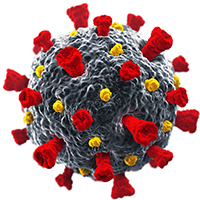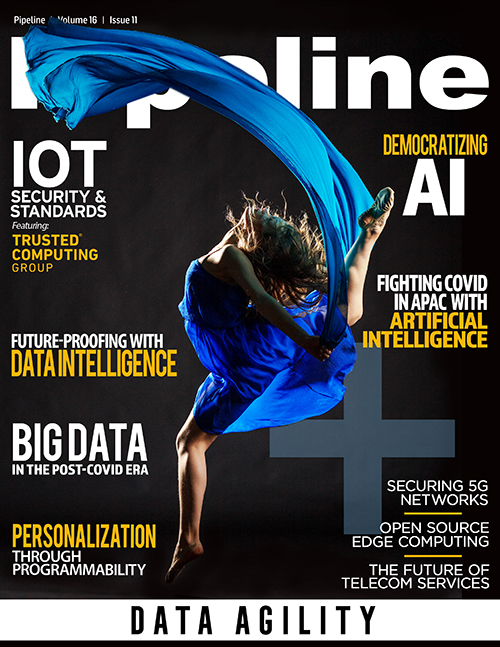Big Data’s Role in the Post-COVID Era
By: Bruce Lehrman

Big Data serves a pivotal role in today’s unpredictable socio-economic climate and will continue to do so in the post-COVID era. Data makes noise on two grounds: its creation and its application. With proper processing and storage support from edge hardware, the control and use of data will become more important than ever.
As the world adjusts to the post-COVID reality, data may hold the key to many of our new daily functions.
New routes for
tracking and creating data
A number of emerging devices are poised to produce real-time, hyper-local personal health information meant to keep citizens safe and healthy in ways we haven’t seen before; from stick-on sensors that provide 24/7 respiratory activity tracking, to AI-powered long distance body temperature scanners at the train station. It’s not just new hardware either. Existing devices with new uses are also going to help. Smart watches to monitor quarantine compliance or Internet-connected thermometers to assess symptom trends are just two examples. Automated devices like these, combined with manual tools like contact tracing and healthcare check-in smartphone apps, create an entirely new sphere of health-related data.
On par with health data, novel approaches to behavioral data are also creating swaths of extremely valuable information relevant to COVID-era life. One obvious target lies in smartphone data. In the United States, government agencies are working on a collaboration between mobile advertising companies and the Centers for Disease Control and Prevention to monitor population movement in the interest of safety. Such information has already been used this way in many other world regions. In Southeast Asia, state efforts have focused on using mobile phone location data to track positive cases and enforce quarantine policies. In China alone, more than 11 million people were traced back to its Wuhan province from over 296 prefectures in 31 different provinces. Other avenues for geolocation have also been explored to track important new data. Google, for instance, introduced its Community Mobility Reports using Google Maps location data. Similarly, Facebook used population movement intelligence combined with friendship pattern models to launch its Disease Prevention Maps initiative. Demographic information is vital for epidemiology, and it’s turning up in spades.
New methods for creating health and behavioral data—location data in particular—stand as two prominent areas where much new information has been brought to bear, but these are by no means the only ones. Real-time trackers now appear on social media and news sites, and fresh statistical breakdowns have sprung up concerning everything from online education to supply chain design. The pandemic thus far has prodded us into becoming data-producing dynamos.
New applications for analyzing and implementing data
Creating volumes of new data sheds light on a plethora of additional challenges. Chief among these is how all this brand-new information can be aggregated, collated, standardized, and applied on a large scale. New data trackers and technical tools, after all, are only as good as the data analytics that grant clarity to the uncovered results. There is an abundance of new elements to understand. It can be challenging to make sense of the results, especially at a national or even global level. Fortunately, new ways of evaluating and employing new data have surfaced.
A critical way data is experiencing heightened use exists in public policy. Authorities worldwide have turned to advanced data analytics and AI tools like never before to inform measures meant to
address aspects like business shutdowns, travel restrictions, stimulus measures, and self-isolation requirements, since the execution of such policies are contingent upon it. The primary reason
stands in the simple fact that it’s difficult to make new evidence-based policy when old evidence is no longer relevant. Making informed decisions requires not just a recognition of the value of
all this new data but also a willingness to share and use the data in new ways. Alerting citizens to risk, mapping webs of potential new infections, and determining the need to isolate infected
or at-risk individuals are tall tasks, and policymakers have turned to data analysis to fine-tune their public directives.![]()



















